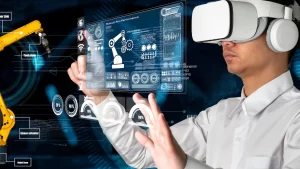
Computer desktops serve as visual user interfaces that give access to hardware functions. Available across platforms including mobile phones, smartphones and desktop computers, desktops provide users with an effortless means of performing everyday tasks.
Full-sized desktops typically consist of a computer case, monitor, keyboard and mouse arranged separately in tower form factor and can be upgraded as needed.
1. Monitor
Monitors are electronic devices which display information being processed by a computer’s central processing unit (CPU), also referred to as VDU or Visual Display Unit.
LED displays consume significantly less power and emit far less radiation, providing a flat screen solution with LED display technology.
Input latency refers to the time it takes a monitor to display an image after receiving a signal; measured in milliseconds. It should be carefully considered when purchasing a new monitor.
2. CPU
The CPU (Central Processing Unit) of any computer serves as its brain, deciphering and executing software commands. Furthermore, its speed plays an integral part in how quickly PCs function.
Fast processors with multiple cores are ideal for gaming and video editing, however it’s essential to protect them with reliable security software and remove any preinstalled programs which might drain resources from their CPU.
CPUs are most frequently found in computers, but can also be found in modern appliances like smart refrigerators and flat-screen televisions.
3. Keyboard
The keyboard is the primary text input device on computers and contains standard function keys, such as Escape key. Additionally, directional keys allow cursor movement. Furthermore, an alphabetic row and numeric keypad that house numbers, basic mathematical symbols and special characters designed to meet national conventions and language needs complete its composition.
Quality in keyboards lies in their keys’ feel, determined by factors like their elasticity, uniform force distribution and key cap firmness. Comfort should always be top priority so as not to cause fatigue to fingers when typing or playing games.
4. Mouse
A mouse is a hand-held hardware input device used to transform movement of one’s hand back and forth, left and right into electronic signals that control a pointer called the cursor on a computer screen.
Most mice contain additional buttons with various functions. Clicking a mouse button often opens or executes programs; clicking and moving the wheel at the same time scrolls web pages.
Ergonomics may pose serious dangers when used incorrectly when operating a mouse. For more information, see OSH Answers’ document on Ergonomics.
5. Optical Drive
An optical drive allows computer users to access CDs, DVDs and Blu-ray discs. There are both internal and external optical drives.
Internal optical drives are integrated directly into a host computer or laptop, while external ones connect via USB or another cable to it.
All-in-one desktop PCs typically include optical drives; however, as technology evolves it has become harder and harder to find new PCs with this feature built-in.
6. Hard Drive
Hard drives are nonvolatile disks that store files such as documents, photos and digital audio and video. Data stored on it remains safe even after power has been turned off on your computer.
If your hard drive becomes full, it may slow your computer significantly as the hard drive must search everywhere to find free space for new files to be stored on it. This process takes longer and takes up more resources.
Hard drives play an essential role in the performance of any computer; thus, most desktops come equipped with fast internal hard drives.
7. Speakers
Speakers are used as output devices to reproduce sound. They can play back audio files, as well as providing voice control of computers.
Desktop spaces are usually restricted and limited in terms of space available for speakers to be set up without reflections being detrimental. To combat this issue, listeners should look for speakers with wide vertical dispersion or place an acoustic treatment on their desk to mitigate reflective surfaces; this would prove especially helpful at higher frequencies.
8. Wireless
Many computers feature built-in wireless networking features; however, these connections may be slow and susceptible to interference. A wireless optimizer can help speed up these connections; uninstalling programs that consume too much bandwidth could also improve internet speeds.
The computer desktop is the part of a PC that houses frequently-accessed files. You can access this through an icon on the computer screen. There are all-in-one models which combine tower and monitor into one case for less desk space consumption.




